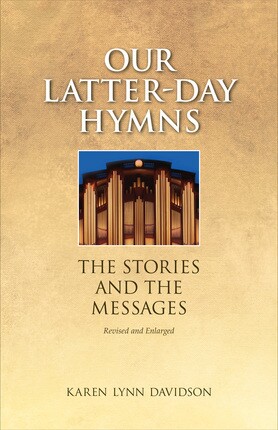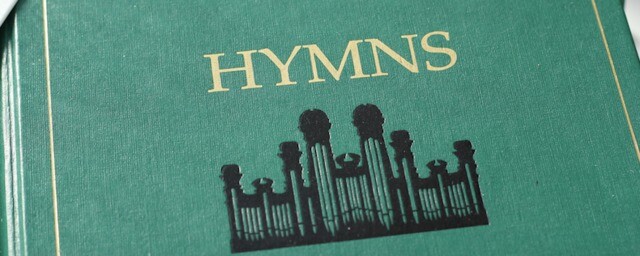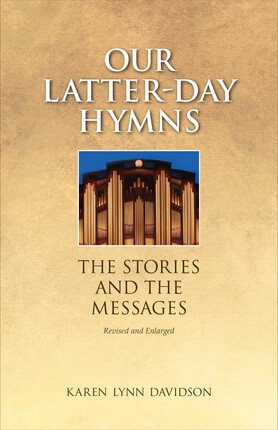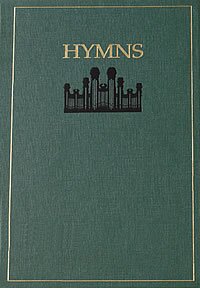The LDS hymnal is full of uplifting music and poetry from a host of different sources, but they all share one commonality—they inspire and lift our minds toward heaven. Just as powerful as many of the words in these hymns are the stories behind them. Here are just a few.
Lead, Kindly Light
In 1833, John Henry Newman had been traveling in Europe for his health. But he became ill in Sicily because of heat and poor living conditions. He recorded, “I sat sometimes by the bedside crying bitterly, and all I could say was that I was sure God had some work for me to do in England” (John Henry Cardinal Newman, Apologia Pro Vita Sua [New York: W. W. Norton and Co., 1968], 40). He decided to sail for England, thinking that his chances of recovery would be better at home. But as he embarked on the first leg of his voyage, from Palermo to Marseilles, the breezes dropped, the fog closed in, and the ship was becalmed for a week. He was homesick and seasick, frustrated at the delay. And to make matters worse, he was seized by an attack of malaria.
These were the events that brought forth “Lead, Kindly Light.” During this miserable week, his longing for England became associated in his mind with longing for heavenly light and comfort. In the past, pride and self-regard had destroyed his simple faith in divine guidance, but his hopes now rested in the Light, his secure protection until “the night is gone” (see Robert Guy McCutchan, Our Hymnody: A Manual of the Methodist Hymnal [New York: Abingdon Press, 1937], 495).
►You’ll also like: 10 Things You Didn't Know about Your Favorite LDS Hymns
Come, Come, Ye Saints
In the minds of many members of the Church, “Come, Come, Ye Saints” is the hymn that more than any other connotes the heritage and spirit of The Church of Jesus Christ of Latter- day Saints. The unforgettable words of this hymn allow us to pay tribute to the unflinching courage of the early Saints and to relate that commitment to our own lives.
William Clayton was a member of the first company of Mormon pioneers to face the westward trek to Utah. Forced to leave Nauvoo before the spring thaw, Clayton and his fellow exiles faced cold, mud, sickness, and hunger. News from loved ones left behind in Nauvoo was slow in coming. For two months William Clayton worried about his wife Diantha, who was still in Nauvoo, pregnant and unable to travel. On April 15, 1846, when word finally reached him of the birth of their son, he was ecstatic. “Truly I feel to rejoice at this intelligence,” he wrote in his journal, “but feel sorry to hear of her [Diantha’s] sickness.” (She was soon to recover.) He then added, “This morning I composed a new song—’All is well’” (William Clayton’s Journal [Salt Lake City: Deseret News, 1921], 19).
William Clayton had actually written new words to an already-existing hymn, popular in his day. Also titled “All Is Well,” the first known publication of the text was in 1836.
The new hymn, known today as “Come, Come, Ye Saints,” quickly became a favorite among the Saints traveling west. A story became popular at a later time that Brigham Young had requested William Clayton to write the hymn, but William Clayton made no note of such a request in his journal, and we have no evidence that this story is true.
Oscar Winters, father- in- law of Heber J. Grant, related an incident that illustrates the significance of this hymn among the pioneers:
“One night, as we were making camp, we noticed one of our brethren had not arrived, and a volunteer party was immediately organized to return and see if anything had happened to him. Just as we were about to start, we saw the missing brother coming in the distance. When he arrived, he said he had been quite sick; so some of us unyoked his oxen and attended to his part of the camp duties. After supper, he sat down before the campfire on a large rock, and sang in a very faint but plaintive and sweet voice, the hymn ‘Come, Come, Ye Saints.’ It was a rule of the camp that whenever anybody started this hymn all in the camp should join, but for some reason this evening nobody joined him; he sang the hymn alone. When he had finished, I doubt if there was a single dry eye in the camp. The next morning we noticed that he was not yoking up his cattle. We went to his wagon and found that he had died during the night. We dug a shallow grave, and after we had covered his body with the earth we rolled the large stone to the head of the grave to mark it, the stone on which he had been sitting the night before when he sang: ‘And should we die before our journey’s through, Happy day! all is well!’” (Improvement Era, June 1914, 781–83).
I Believe In Christ
The members of the Church first heard the words of this hymn when Elder Bruce R. McConkie, a member of the Quorum of the Twelve Apostles, delivered them as part of his general conference address in April 1972. Elder McConkie’s widow, Amelia S. McConkie, said that her husband “loved to express his love for the scriptures and Christ in poetry.” The eight verses attracted considerable attention. They were first given an anthem setting by Latter-day Saint composer Rhea B. Allen and were performed by the Tabernacle Choir. The simpler hymn setting, created by John Longhurst for the 1985 hymnal, was introduced to the Church by the Tabernacle Choir at general conference in April 1985. John Longhurst noted, “This was Elder McConkie’s last conference— the one in which he left his final testimony in a way that those who heard it shall never forget.”
At that conference, Elder McConkie bore a powerful, moving witness of Jesus Christ: “I testify that he is the Son of the Living God and was crucified for the sins of the world. He is our Lord, our God, and our King. This I know of myself independent of any other person.
“I am one of his witnesses, and in a coming day I shall feel the nail marks in his hands and in his feet and shall wet his feet with my tears.
“But I shall not know any better then than I know now that he is God’s Almighty Son, that he is our Savior and Redeemer, and that salvation comes in and through his atoning blood and in no other way” (Ensign, May 1985, 11).
The words of this hymn are the words of a servant of the Lord who spent his life speaking and writing about the Savior. The text is a grand and sweeping testimony of Jesus Christ. Doubt and unhappiness disappear as faith in Jesus Christ dominate every thought and feeling.
The powerful musical setting in our hymnbook, as unwavering as the text, emphasizes the uplifting and positive nature of the words. As John Longhurst was working on the music, his first impulse was to cut the number of verses from eight to four, since he felt this length to be about right for current hymn usage. But Elder McConkie, whose health at that time did not permit extensive revision or collaboration with regard to this hymn, wished all eight verses of his testimony to be included. The solution was to create an eight-line hymn instead of a four-line hymn; each hymn verse actually includes two verses of the original poem. The first half of each verse is almost identical musically to the second half.
John Longhurst named the tune WHITE CITY because he began work on the tune while riding the White City bus in Salt Lake City.
►You’ll also like: The Hymn President Nelson Wrote + the Favorite Hymns of All 17 Latter-day Prophets
I Need Thee Every Hour
Though not of Latter-day Saint origin, this hymn strikes a meaningful chord among Latter- day Saints in its humble pleading for the constant presence of the Savior. In this hymn we petition him repeatedly to be with us, not just in our church meetings, not just in times of trial, not just on special spiritual occasions, but every hour.
Author Annie S. Hawks was a member of the Park Avenue Baptist Church in Plainfield, New Jersey, where Robert Lowry was her pastor. She was a prolific writer, and he set many of her texts to music.
Both author and composer commented on the creative process behind the hymn. Annie S. Hawks wrote: “I remember well the morning . . . when in the midst of the daily cares of my home . . . I was so filled with the sense of the nearness of the Master that, wondering how one could live without Him either in joy or pain, these words ‘I need Thee every hour’ were ushered into my mind. . . . It was wafted out to the world on the wings of love and joy, rather than under the stress of great personal sorrow. . . . It was not until long years after, when the shadow [of a great loss] fell over my way . . . that I understood something of the comforting in the words I had been permitted to write.” Robert Lowry commented: “I have no method [of writing songs]. Sometimes the music comes and the words follow. . . . I watch my moods, and when anything strikes me, whether words or music, no matter where I am, at home, or on the street, I jot it down. . . . My brain is a sort of spinning- machine, I think, for there is music running through it all the time. I do not pick out my music on the keys of an instrument. The tunes of nearly all the hymns I have written have been completed on paper before I tried them on the organ” (quoted in Phil Kerr, Music in Evangelism [Glendale, Calif.: Gospel Music Publishers, 1939], 145, 223–24).
I Am a Child of God
In 1957 the Primary General Board was planning a Primary general conference program to be held in the Salt Lake Tabernacle in April of that year. The program was to center on the need of children to be taught the gospel. The board asked Naomi W. Randall to write a new song and suggested that she enlist the help of composer Mildred T. Pettit, then a resident of Pasadena, California. Although the two women were not acquainted, they discussed the project by phone.
Naomi Randall reported: “That evening, I got down on my knees and prayed aloud, pleading that our Heavenly Father would let me know the right words. Around 2:00 A.M. I awakened and began to think again about the song. Words came to my mind. . . . I immediately got up and began to write the words down as they had come to me. Three verses and a chorus were soon formed. I gratefully surveyed the work, drank of the message of the words, and returned to my bedroom where I knelt before my Father in Heaven to say ‘Thank you!’”
The general board approved the words the next morning, and Naomi Randall sent them to Mildred Pettit, who returned the tune by special delivery mail in less than a week. “I Am a Child of God” was sung at the April meeting and was first published Churchwide in the June 1957 Children’s Friend.
The words of the chorus originally read, “Teach me all that I must know / To live with him someday” (italics added). A few years after the song was published, President Spencer W. Kimball, a member of the Quorum of the Twelve at that time, attended a conference in Elko, Nevada, where a Primary children’s chorus sang the song. Naomi Randall said: “On the trip home he talked with a Primary General Board member who had attended that same conference. He expressed his love for the song, then stated that there was one word in the chorus that concerned him. He wondered if Sister Randall would consider changing the line that says ‘Teach me all that I must know’ to ‘Teach me all that I must do.’ Of course I gladly accepted his suggestion.
“I wondered why I didn’t include that thought at the time the lyrics were first written. But as time went on I came to feel very sincerely that this was the way the Lord wanted the song to evolve, because it became a teaching moment for members all over the Church and impressed upon their minds that knowing the gospel is not all that is required; it is the day- byday doing the Lord’s will and keeping the commandments that help us reach our eternal goal.”
From the time of that incident, said Sister Randall, President Kimball was fond of saying, “Naomi Randall wrote most of the words, but I wrote one!”
In his October 1995 general conference address titled “Powerful Ideas,” Elder Dallin H. Oaks asked us to “consider the power of the idea taught in our beloved song ‘I Am a Child of God.’ . . . Here is the answer to one of life’s great questions, ‘Who am I?’ I am a child of God with a spirit lineage to heavenly parents. That parentage defines our eternal potential. That powerful idea is a potent antidepressant. It can strengthen each of us to make righteous choices and to seek the best that is within us. Establish in the mind of a young person the powerful idea that he or she is a child of God and you have given self- respect and motivation to move against the problems of life”
Lead image from the Mormon Tabernacle Choir blog

If you enjoy the hymns of The Church of Jesus Christ of Latter-day Saints, then you will enjoy Our Latter-day Hymns: The Stories and the Messages. In this volume, you will find the stories of all the hymns in the 1985 LDS hymnbook, so far as those stories are known. Some of the hymns came about in ways that are quite dramatic and personal; others came into being under ordinary circumstances. And each of the more than three hundred hymns has a message all its own.



